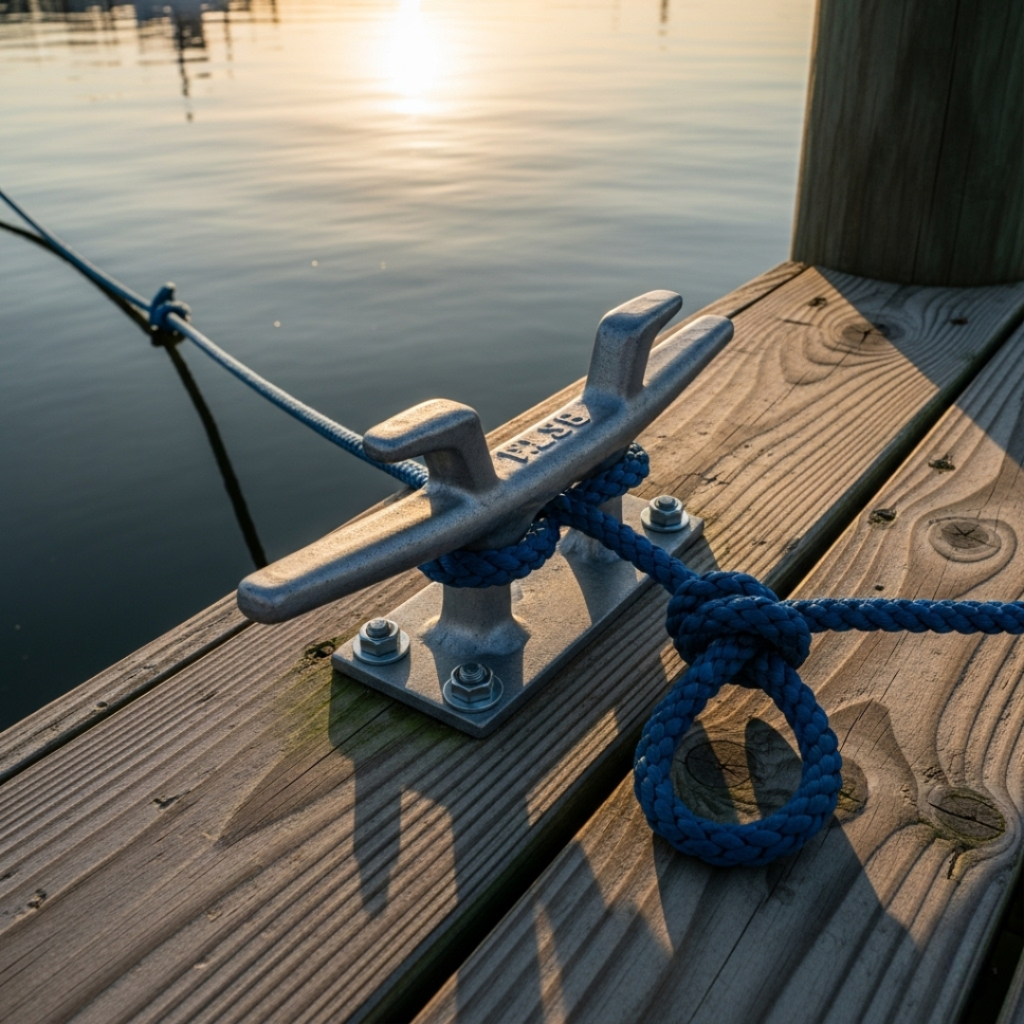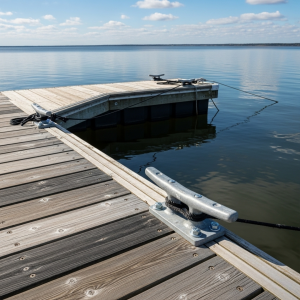Where Should Cleats Be Placed on a Dock? Best Practices for Boat Owners
Where should cleats be placed on a dock? It’s a question every boat owner should ask before installing or upgrading their dock hardware. Dock cleats may seem like small components, but their placement has a big impact on safety, convenience, and the lifespan of both your dock and your boat. Correct cleat positioning ensures secure mooring, prevents avoidable accidents, and makes docking a smoother, less stressful experience whether you’re tying up after a long day on the water or securing your vessel before a storm. In this guide, we’ll break down the best practices for cleat placement, common mistakes to avoid, and tips for making your dock both functional and safe.
Why Cleat Placement Matters
Cleats are the primary tie-off points for securing your boat to the dock. If they’re positioned incorrectly, you risk:
- Creating trip hazards for people walking along the dock.
- Forcing dock lines into awkward angles that place stress on the lines, cleats, and your boat’s cleats.
- Losing holding strength in challenging weather or tidal conditions.
Proper cleat placement allows boat lines to hold steady, reduces wear and tear on both dock and vessel, and gives you confidence that your boat is secure, even in rough water.
Standard Dock Cleat Placement
The general rule for dock cleat placement is every 8 to 10 feet along the dock. This spacing ensures versatility for tying up different boat lengths and allows for multiple tie-off points without having to stretch ropes too far.
Here’s a breakdown of common placement recommendations:
1. Near the Dock Ends

Install cleats about 12 to 18 inches from the edge of the dock. These serve as primary bow and stern tie points for incoming boats.
2. Alongside the Dock

On longer docks, install cleats at regular intervals to accommodate varying boat sizes and mooring styles.
3. Finger Piers

If you have finger piers, place cleats at both the far end and the midpoint for extra flexibility in securing boats.
Cleat Orientation
Cleats should be installed parallel to the dock edge so that lines can be quickly wrapped and secured without tangling. This alignment also keeps the walking path clear and makes it easier to tie off lines without stepping into unsafe positions.
Mounting for Maximum Strength
A well-placed cleat is only effective if it’s mounted securely. To ensure maximum holding power:
- Use through-bolts with washers and nuts instead of just screws.
- Choose marine-grade stainless steel or galvanized cleats to prevent corrosion.
- Use backing plates or reinforcement, especially on floating docks, for added durability.
Avoiding Trip Hazards
One of the most common cleat placement mistakes is putting them in high-traffic walking zones. While accessibility is important, cleats should sit close to the dock’s edge, not in the middle of footpaths. This keeps them functional but out of the way for anyone boarding, unloading, or walking along the dock.
Matching Cleat Size to Boat Size
Cleat size should match the diameter of your dock lines. A reliable rule of thumb is:
- Cleat length should be about 10 times the diameter of your dock line.
- Example: A ½-inch dock line pairs best with a 5-inch cleat.
Larger cleats are fine for smaller boats, but undersized cleats may fail when exposed to strong winds, currents, or waves.
Floating Dock Considerations
If you own a floating dock, remember that water level changes will affect the angle and tension of your lines. Consider installing extra cleats or adjusting their locations for better performance during tidal shifts or seasonal water changes.
Final Thoughts
If you’ve been wondering where should cleats be placed on a dock, the ideal setup is to position them 12–18 inches from the dock ends, space them 8–10 feet apart, and align them parallel to the dock edge with secure marine-grade mounting hardware. Following these best practices ensures your dock is not only functional but also safe for both boats and people.
For boat owners who want high-quality cleats, marine hardware, and accessories that are built to last, check out Dockstop, your trusted source for durable, reliable, and easy-to-install dock solutions that keep your vessel secure in any conditions.
